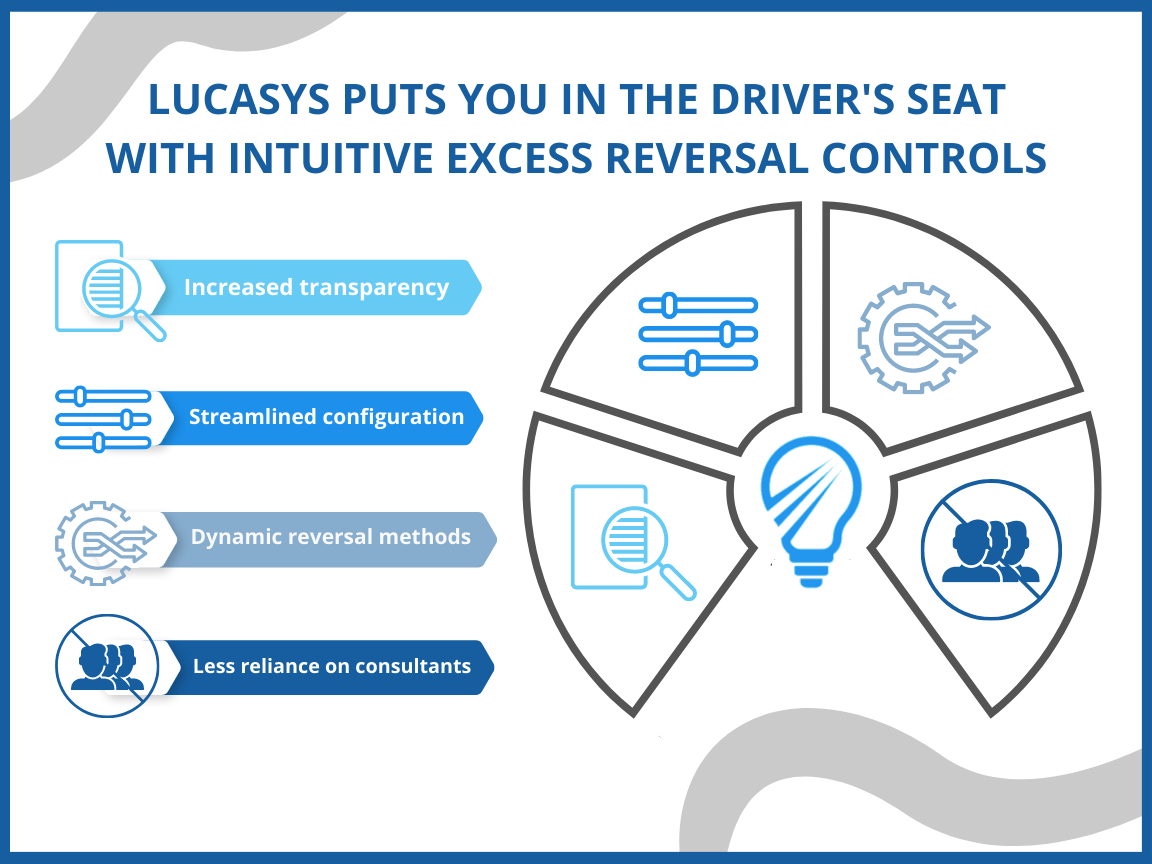Lucasys Deferred Tax Empowers Utilities with Dynamic Excess Reversal Controls
Managing excess deferred income taxes is a particularly complex issue for rate-regulated utilities, but now Lucasys Deferred Tax is giving utilities unprecedented control over their reversal structures. With advanced new configuration features, users can tailor their deferred tax management strategies to their specific needs, empowering them to streamline their processing like never before.
The Challenge of Deferred Income Taxes for Rate-Regulated Utilities
Rate-regulated utilities have two primary methods for reversing accumulated deferred income taxes: the average rate assumption method (ARAM) and alternative reversal methods such as the reverse South Georgia method (RSGM). While many utilities have adopted a comprehensive application of one method or the other, recent legislation has necessitated that some companies either transition their reversal methods or use a combination of two types of deferred tax reversals.
In the past, transitioning between reversal methodologies required a significant amount of time and resources, as the utility must develop and implement new processes, procedures, and controls to support the new method. In addition, the regulatory approval process may be impacted, as regulators must review and approve any changes to the method used to calculate deferred tax balances.
Dynamic Controls for Deferred Tax Reversals
Lucasys Deferred Tax has modernized the management of deferred tax reversals by building a suite of intuitive and dynamic controls to streamline their management. Deferred tax balances and associated excess is tracked at a granular level to allow for complete calculation transparency, allowing for new insights into the accumulation and reversal of deferred balances. In addition to increased transparency, Lucasys Deferred Tax allows for streamlined configuration of excess deferred income taxes reversals.
Users can seamlessly change between reversing excess over the ARAM or alternative reversals with the click of a button.
The ability to switch between methods can provide utilities with more flexibility in their financial reporting, allowing them to choose the method that best suits their needs in a given period. Recouping deficiencies of deferred taxes or returning excess deferred taxes to customers no longer requires outside consultants or manual spreadsheets. No longer are utilities reliant on third-party consultants to reformat their tax data. With Lucasys Deferred Tax, the user is in control.
How to Learn More
Master uncertainty by leveraging industry-leading modeling solutions with Lucasys. Whether looking for new software or trying to get the most value out of existing solutions, Lucasys can provide insights into the latest tax issues of the utility industry. To learn more about how Lucasys can help, visit https://www.lucasys.com/deferred-tax-solutions.



